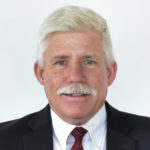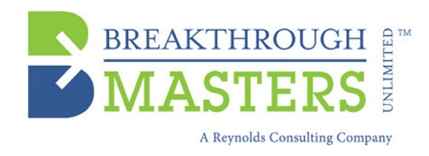
Beat the Odds with Acquisitions Through Strategic Clarity
As Rick Blomquist knows, acquisitions play an important role in business growth, but only if successful and the odds are against you. Typically, 70-90% of mergers and acquisitions fail to generate shareholder value according to collated research and Harvard Business Review. Yet for every dollar of business revenue growth generated, 35% comes from mergers and acquisitions. (Source: The Granularity of Growth: How to Identify the Sources of Growth and Drive Enduring Company Performance by Patrick Viguerie et al). To have all the tools in the tool box to drive strategic growth, successful acquisitions needs to be one of them.
Acquisitions in high growth industries are often popular with companies seeking diversification and faster growth. According to the America Pet Products Association, revenue in the pet industry has experienced an annual growth rate of 5.4% since 2002 with steady revenue growth for over 20 years. The higher-than-GDP rates of growth make it an attractive industry for many who want to accelerate their growth. Tractor Supply Company purchased Petsense, a specialty retailer of pet supplies and services in 2016, to augment the growth of their pet specialty business. (Link: http://ir.tractorsupply.com/file/Index?KeyFile=36071081)
Rick Blomquist is the Vice President and General Manager of Pet-Ag, Inc. a wholly owned subsidiary of PBI Gordon. He is no stranger to the pet care industry as he started with Farnum Companies right out of college and eventually became President and CEO before its sale to Central Garden and Pet in 2006. He stayed with the company for 5 more years before joining PBI Gordon in 2012 to create a consumer animal health division for the pesticide/vegetative management and veterinary animal health company. Rick has engineered several very successful acquisitions in his career that have beat the odds and shares his insights on how to make that happen.
What kind of growth have you experienced in the Consumer Pet Division since joining PBI Gordon in 2012?
The consumer pet division is about 5 times as much revenue as it was when I started and now is about 25% of PBI Gordon’s revenue. The main motivation for PBI Gordon to get into animal health was to diversify the business. They had already added a veterinary animal health company and were interested in the over-the-counter side of the industry. They had purchased Lambert K as their first entry and that was essentially the business when I got there. By itself, Lambert K had a nice line to offer but it wasn’t large enough to serve as a platform for the division. Operating costs overbalanced revenues. We knew we needed to build out the division swiftly. Acquisitions is the key strategic tool to accelerate market entry. But we had to find the right acquisition.
What was the criteria you used to find a suitable acquisition?
Our first step was defining the strategic criteria we wanted to accomplish. While we were open to an acquisition it had to meet specific criteria before we fully embraced it as a solution. We wanted critical mass to support our infrastructure, a brand that had market credibility, an organization that had sales on the ground that could be leveraged, and had a service process that was pet-oriented. It was also important that their values were consistent with PBI Gordon’s as we are an ESOP and believe employees are critical to our success. I was aware of Pet-Ag, Inc. from my previous experience in the pet industry and knew that they might be open to discussions.
How did the acquisition process work?
It took us about a year to close from when we started. We wanted to tie the timing to year end closing and distribution channel communication opportunities. We spent the year doing due diligence and building the business case for the board. While we believed our best entry point was through acquisition, we needed to make a viable and fact-based case to the decision-makers. We not only generated financial data but also created a vision for our future that includes building a bigger and more powerful branded platform.
What are some of the things that have accounted for the success of the acquisition?
Our initial focus was on distribution. We were able to expand into new channels as well as expand core product placement of each brand across channels. With a stronger overall portfolio we were able to accomplish more with our channel partners. E-commerce is one of the fastest growing channels today. We sell to the mass channels partners like Wal-mart as well as pet specialty chains and independent pet/animal health companies which service independent retailers and veterinarians. We generate about 15% of our business internationally and expect that to continue to grow particularly in South America, Asia and the EU. Now, we are investing in product development and marketing. We just brought a new talent on board to run our R & D.
What didn’t go as expected?
We didn’t anticipate some of the fallout among people. We had hoped to hold on to everyone and not change the basic business but as we applied our new strategy we had a few people leave that we didn’t expect and they had some great institutional knowledge. However, in general the attitude and commitment of the group has been great and they’ve embraced the new business and our vision.
What is your biggest takeaway about how to make successful acquisitions?
Everyone has an opinion about what to acquire but you have to remind yourself it is not about the acquisition but how do you want to grow. We need to examine all the options—make, borrow, or buy—and figure out what each can do for us. Our strategy drives acquisition but acquisition is not a strategy in itself. Therefore, you have to be clear about your purpose and criteria.
How do you achieve strategic clarity?
Clarity and alignment is a constant challenge that requires regular communication. I am a believer of getting everyone in the room and having conversations, linking actions to goals, and cascading those goals throughout the organization. When you see conflict, address it quickly and use the goals to sort it out. I have learned not to assume people understand what I am saying so communication requires active listening as well as actions that reinforce words. And follow up, follow up and follow up!
